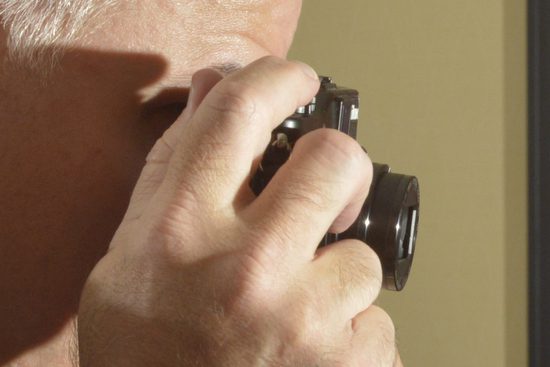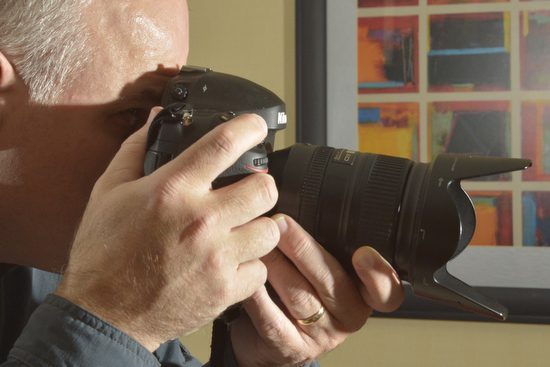| Nikon P7000 |
LCD Benefits
First, the LCD on most modern digital cameras and cell phones is pretty big. Compare that screen to the little eyepiece on the Nikon P7000 above, and at first glance, you might prefer using it over the viewfinder.
You can display more information on the LCD than on the viewfinders. I have the camera set for Aperture Priority here due to the big “A” in the left-hand corner. You can also see the ISO of 100, 1/1, and ƒ/4. In addition to these settings, you can see the histogram, the flash is turned off, the vibration reduction is on, and the infrared remote is turned on.
Also, you can see the JPEG setting is on FINE JPEG. Next to it, the size of the image is set to the highest for this camera, which is 10 Meg.
As you can see in this photo of me using the LCD, I must keep the camera a reasonable distance from my face.
LCD Disadvantages
Holding the camera still this far out isn’t easy. I guess you now know why almost all point-and-shoot cameras now have vibration reduction. It is trying to compensate for the above-average camera shake compared to the viewfinder.
Now, using the viewfinder, the camera is next to my eye.
I can now use my two hands and my head as a tripod. I push the camera next to my head, which will help steady the camera. When you do that, your pictures will be sharper because you are less prone to shaking the camera.
My Nikon D4 also has an LCD like the Nikon P7000, but photographers rarely use it to shoot still images.
When you are outside, it is tough to see the LCD in bright sunlight. I prefer the viewfinder.
Viewfinder Advantages
- You can use your body as a tripod since you can now steady the camera on your head.
- I can see in any situation
- On most DSLR cameras, all the information on the LCD is in the viewfinder






